Cover image: Andrew Veen, Lead Vision Designer for Adventures in the Forgotten Realms
Dungeons & Dragons and Magic: the Gathering have been a huge part of my life since before I was a teenager, so I can’t tell you how excited I am to now have a crossover set that—in my opinion—is an incredibly fun celebration of both; and how even more excited I was to learn that an old friend, Andrew Veen, had been Lead Vision Designer on it. Veen—as I’ve always known him—sat down with me last weekend to talk about how he got hired at Wizards, his work on Magic and other games, and his role as lead vision designer on the passion project that is Magic: the Gathering’s Dungeons & Dragons: Adventures in the Forgotten Realms.
Role Initiative
“How did you find yourself working for Wizards?”
When I moved to Seattle, my board game group happened to be a bunch of Wizards people, and when I would have insightful things to say about the board games, and routinely place well and win games with them, they said, “oh, why don’t you come do an internship on Kaijudo,” that Wizards was trying to relaunch. It had been super successful in Japan, but not so successful in the US, so they rebranded it. It went better but still was not super successful here; it’s still enormous in Japan. So, when that closed down, I stayed on to help make the Japanese version of the game, but started loaning my talents to other departments, including Magic.
With time, I served on more teams. Mark [Rosewater] noticed that I was a “better designer than most developers, and a better developer than most designers,” even if I wasn’t the top of either game. So it was useful to have me on the team, because I could effectively communicate early vision knowledge to the dev team if it was late, and vice versa. I was on development in Theros [Beyond Death], exploratory into vision on Ikoria, and Zendikar Rising was the first set that really had my DNA in it.
Leveling Up
“How did you find yourself leading vision design for a D&D set?”
[For] Zendikar Rising, they wanted to take Zendikar back to its roots in adventure, inspired by Dungeons & Dragons, Indiana Jones, World of Warcraft, and so the question was how to evoke this. I wanted past allies to come back, and I came up with what became the party mechanic. I made certain to ask, very clearly, “We’re not going to make a D&D set, right? This is the D&D set, right? Because otherwise, we should save this party mechanic,” and they said “Absolutely, absolutely.” [It was not.]

Erik Lauer then refined party from what Mark and I constructed, moving the mechanic and the classes that support it into the colors that we know it in today.
Midway through Zendikar I switched over to Strixhaven as “strong second” to Rosewater’s lead, and then I was on the two upcoming Innistrad sets, and they said, “hey, you’re ready to lead a set! We have a Core Set coming up, and we want it to be D&D themed.” So this was great—Forgotten Realms is one of my favorite settings; I’ve played more in the Realms than anywhere else, from 3rd through 5th edition. So my challenge was to make a D&D core set: novel, simple enough for new players, enticing for enfranchised players, but also approachable and resonant enough for D&D players. Of course I tried to get the party mechanic into the set, and I lobbied hard, but was ultimately told “no.”
You Must Gather Your Party Before Venturing Forth
“What was the design process like for AFR?”
The vision design team was me, James Wyatt, Ben Petrisor, Jules Robbins, Mark Gottlieb, and Morrigan Robbins. James was the creative lead, and litmus test for if something was a good idea, because he’s got so much love and knowledge for both D&D and Magic. Petrisor is a wikipedia of D&D information. Jules was lead of development, and the one who came up with the dungeon mechanic. Gottlieb had no D&D experience, but he’s a spectacular designer, so if we had a good D&D idea, we could just explain it and he could translate that into Magic mechanics. Morrigan brought knowledge of the current online presence of D&D—they kept me relevant. I mostly engage D&D through the sourcebooks and play with friends, and I was mostly unaware, for example, of Critical Role, and Morrigan knows things like “if you are a Critical Role fan, what do you want?” The answer, which guided a lot of our design, was choice, drama, and humor.
So first, we started diving deep into characters we wanted to include in the set—we knew we’d have signpost uncommons as legends—where possible, characters from D&D’s past and future, so we could uplift upcoming characters as well.
We then asked ourselves “What would you be mad if the D&D set didn’t have?” So we made sure that there would be the chromatic dragons, beholders, and so on. One of my personal guidelines was that I wanted every major release from Fifth Edition, any video game people played, and so on, represented somehow, from the Player’s Handbook all the way up to Tasha’s Cauldron of Everything, and we also looked to Baldur’s Gate and Neverwinter Nights. Dungeons & Dragons, for me, is about feeling included, and having a shared experience, so something in the set had to exist for every release because every release, every game is someone’s favorite. So for D&D it’s less about psychographics, less about Tammy and Jenny and Spike, and more about recognition—showing people that the thing that they love is cool and valid.
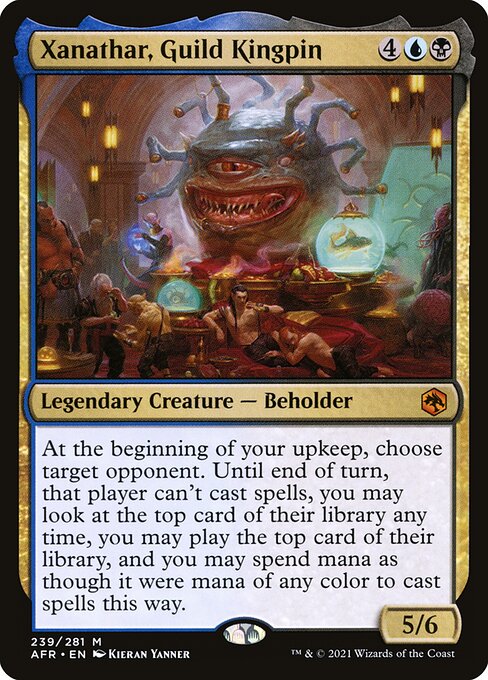
An interesting aside: Xanathar has more brand recognition than Drizzt and Lolth. He is the most recognizable character in D&D right now because he’s on what was [at the time] the best selling book in Fifth Edition.
Fifth Edition was a Renaissance for D&D, so there’s a renewed emphasis on other kinds of inclusivity as well, especially representation in art. Wizards of the Coast’s focus on inclusivity in art can often be more effectively communicated in Magic, where there are so many more heroes to commission art for to be the locus of change. If you don’t see yourself in our world, that’s our fault.
Dungeons & Dragons is coming from a much more male-dominated era in gaming history. The hobby has grown beyond that, but the way D&D grows is different than the way Magic grows. The protagonists in D&D are the players, of all creeds, genders, and races, but most of the characters we introduce are villains. So this creates a problem. You don’t want someone’s first experience of seeing themselves in the space be as a villain. Magic presented an opportunity to launch a bunch of new heroes of diverse backgrounds.
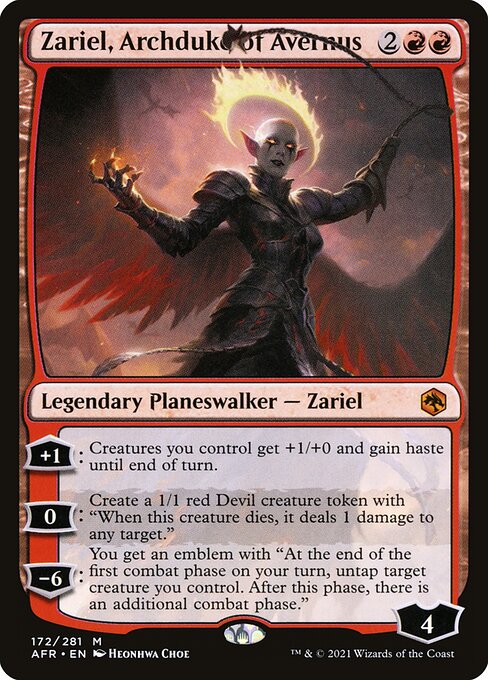
After the signpost uncommons, I laid out the planeswalkers, because we knew we wanted one of each color. I thought having Zariel would be ideal, since she’d still be relatively recent by the time Core 2022 was set to release, and she’s got a great character arc if you play Descent into Avernus. We went back and forth between who should be the blue planeswalker. Mordenkainen eventually won out, because Mordenkainen is on the cover of a recent book, has spells named after him, and isn’t just a Mary Sue.
We pretty easily came up with the red, white, and black planeswalkers, there was some debate over blue, but who is green? There was no obvious choice for us. However, the Dungeons & Dragons team had some new characters in the works, and so they made Ellywick, who has a fantastic story that I can’t wait for folks to see.
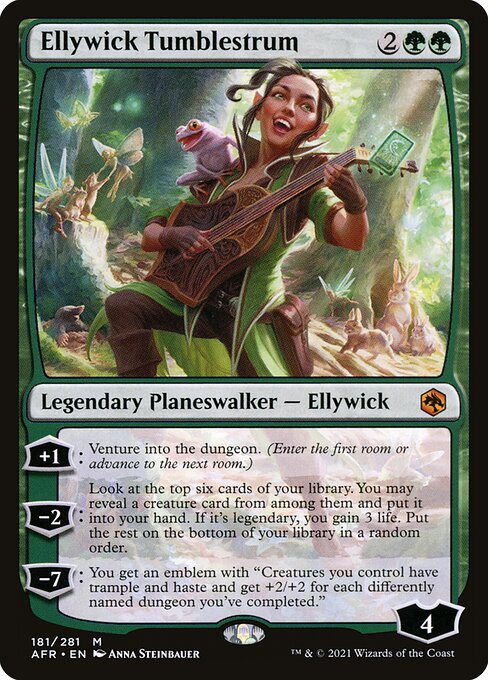
Finally we needed to diversify the cards to fit all the things we wanted to include. Players wanna see their class, their favorite spell, their favorite monster—so how do we do that? My take on it was to ask for as many references per card as possible, and have the gameplay sell the rest of it. One of the things we did was put flavor text on everything, even lands, and James Wyatt came up with the idea that it was “read aloud” text, as if the DM was saying it. Flavor words came to him after many of the initial designs. I didn’t know we could do that, but it’s a stroke of genius.
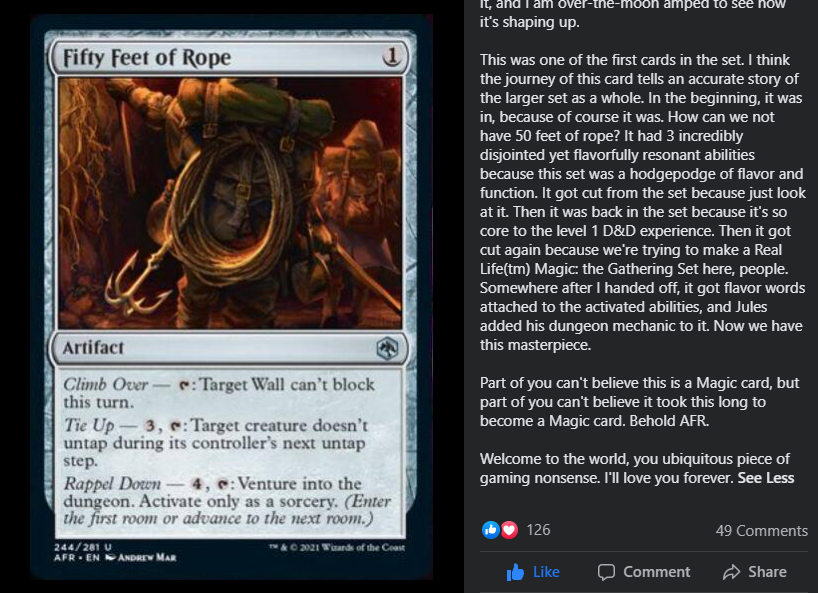
Andrew Veen’s love letter to his child.
Passing the Delver’s Torch
“So what did your version of the set look like?”
In my vision handoff, I didn’t hand off a set or a skeleton. Instead of a 2-3 page vision document, it was 30 pages of goals, mechanical space, and reference materials, because this was going to be made by people in Magic R&D without the same kind of familiarity in D&D. I told them, essentially, “here’s what you need to know to make this set tick.”

Rather than fill a set full of fluff that might get cut, I gave the developers many versions of the cards that mattered most, four or five versions of twenty or thirty cards. For example, I knew we needed Drizzt, so I made a few different ideas for Drizzt; we needed a Lolth, so I included a couple pitches for Lolth, stuff like that. Some designs were haphazard, but some were good—like Zariel and Fifty Feet of Rope—and made the final set.
Jules came up with the dungeon mechanic, the draft archetypes, and he had the freedom to start almost from scratch—the first version was almost entirely thrown out, because he had been designing a D&D Core Set, but was later told, “just make this the best D&D set it can be.” So Jules had to re-do almost everything.
By this time I had left to work at Bungie, so even though I had been “lead vision designer,” I had no idea what I would see when this was done. Zariel is basically the same, the planeswalkers are who I thought they would be, but so much is very new.

White Mage on the Council of Colors
“So, you were the “white” member on the Council of Colors, right?”
Yes! White has problems and will forever have problems, but I did some things that I was happy about.
There’s sometimes a misconception about what the Council of Colors does. We don’t sit around and decide what color gets what, and we aren’t always designing the cards we discuss. Council of Colors meetings are more about making sure the color you represent is not breaking the color pie.Council members actually rein in their colors, and try to keep them from eating one another’s lunch. Most of the time, white and green are trying to eat each other’s lunch. But we just raise concerns, we can’t veto cards.
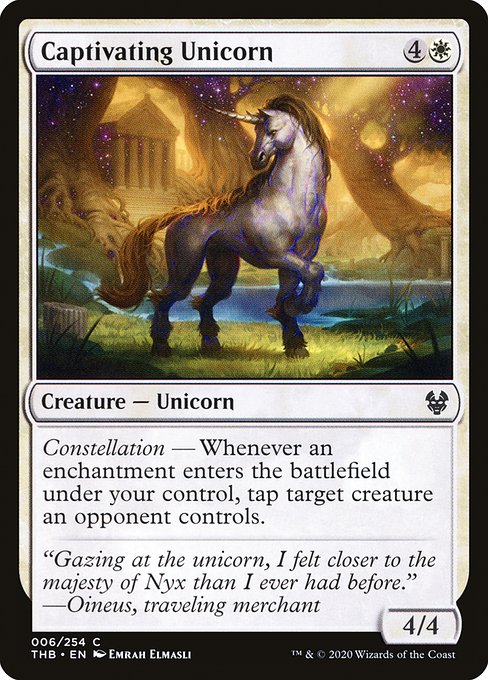
However, we can advocate for a color when we see repeated collisions. For example, white kept wanting to get 4/4 creatures at common—which it used not to get—and eventually I said, “hey, this keeps coming up. It’s an elegant solution to a need in the limited environment. It isn’t eating green’s lunch because green has something like Colossal Dreadmaw.” A white five mana 4/4 with upside doesn’t seem nearly as good by comparison, and isn’t encroaching on that territory.
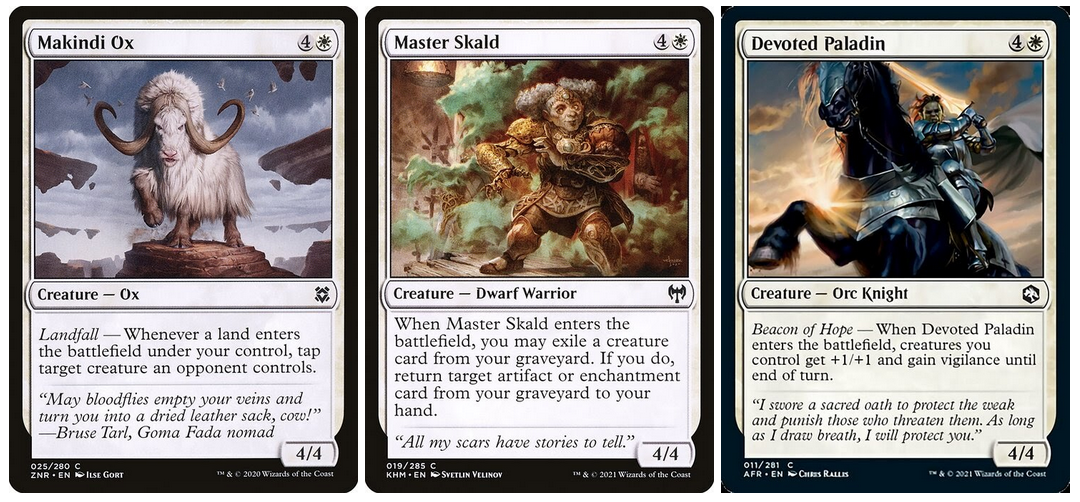
My parting gift was moving Elvish Visionary into white. My argument was that it should’ve been white the entire time. I believe that the idea of a cheap creature that comes into play and draws you a card should not be green. The way green gets its card advantage is through the strength of its creatures—when its creatures win fights, or you can draw a card when a creature over a certain power comes into play, things like that. The idea of a cheap creature that cantrips is anti-green, it’s just white. The idea of small creatures in white generating cards is something that I really pushed.
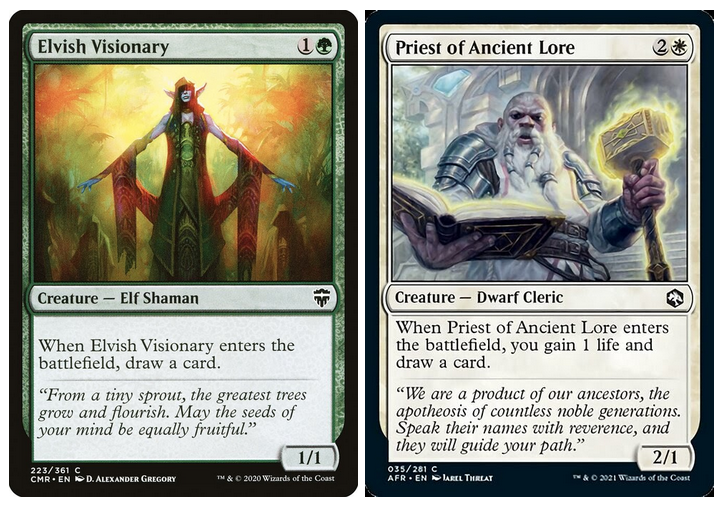
Parting Thoughts
“Do you have any final thoughts to share about this set, Wizards, or your role?”
I’m so happy that this set is finally coming out. The last project I worked on at Wizards of the Coast was also the first set I ever led. As the Lead Vision Designer for this set, I was simultaneously excited to work on uniting two brands I deeply loved and terrified of letting down the incredibly passionate fandoms of both games.
I love my new job, I love making Destiny 2, but there are plenty of things I miss about Wizards: the things we worked on were things that we all loved, and we all cared; going to work every day to work on this thing that changed my life and had an impact on other people as well.
Lots of people, when they’re young, want to change the world for the better, but it’s easy to lose sight of that, and sometimes you wonder, “is what I’m doing just completely self-serving?” But I realized that, while of course there can be a lot of negativity, on net, the amount of love and joy and happiness that comes from the game is huge. To think about that is humbling, and the reason I like being a game designer.
Magic sets Andrew Veen was involved in making include Shadows over Innistrad, Guilds of Ravnica, Commander 2019, Theros: Beyond Death, Ikoria: Lair of Behemoths, Zendikar Rising, Commander Legends, Strixhaven: School of Mages, Adventures in the Forgotten Realms (lead vision), and the upcoming Innistrad: Midnight Hunt, and Innistrad: Crimson Vow. He also worked on Kaijudo, Tyrants of the Underdark, and Betrayal Legacy. He left Wizards in December of 2019 and is currently a senior designer on Bungie’s Destiny 2. This interview has been edited for length and clarity.
Jacob Torbeck is a researcher and instructor of theology and ethics. He hails from Chicago, IL, and loves playing Commander and pre-modern cubes.

